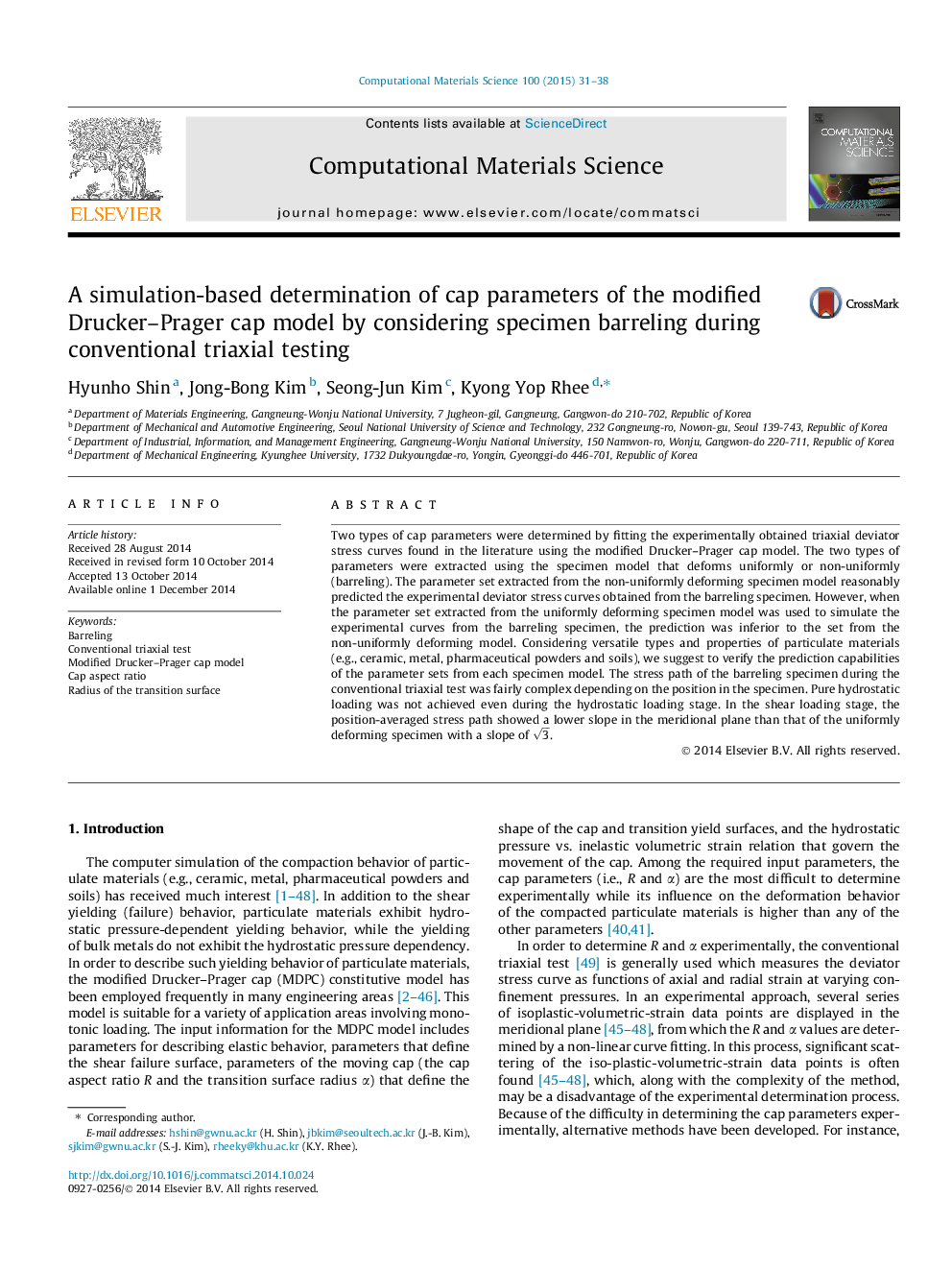| Article ID | Journal | Published Year | Pages | File Type |
|---|---|---|---|---|
| 1560408 | Computational Materials Science | 2015 | 8 Pages |
•Cap parameters of the modified Drucker–Prager model were determined.•It was based on the simulation of the curves from the conventional triaxial test.•Barreling and non-barreling specimen models were considered.•Barreling specimen model results in a better parameter set.
Two types of cap parameters were determined by fitting the experimentally obtained triaxial deviator stress curves found in the literature using the modified Drucker–Prager cap model. The two types of parameters were extracted using the specimen model that deforms uniformly or non-uniformly (barreling). The parameter set extracted from the non-uniformly deforming specimen model reasonably predicted the experimental deviator stress curves obtained from the barreling specimen. However, when the parameter set extracted from the uniformly deforming specimen model was used to simulate the experimental curves from the barreling specimen, the prediction was inferior to the set from the non-uniformly deforming model. Considering versatile types and properties of particulate materials (e.g., ceramic, metal, pharmaceutical powders and soils), we suggest to verify the prediction capabilities of the parameter sets from each specimen model. The stress path of the barreling specimen during the conventional triaxial test was fairly complex depending on the position in the specimen. Pure hydrostatic loading was not achieved even during the hydrostatic loading stage. In the shear loading stage, the position-averaged stress path showed a lower slope in the meridional plane than that of the uniformly deforming specimen with a slope of 3.
Graphical abstractFigure optionsDownload full-size imageDownload as PowerPoint slide
